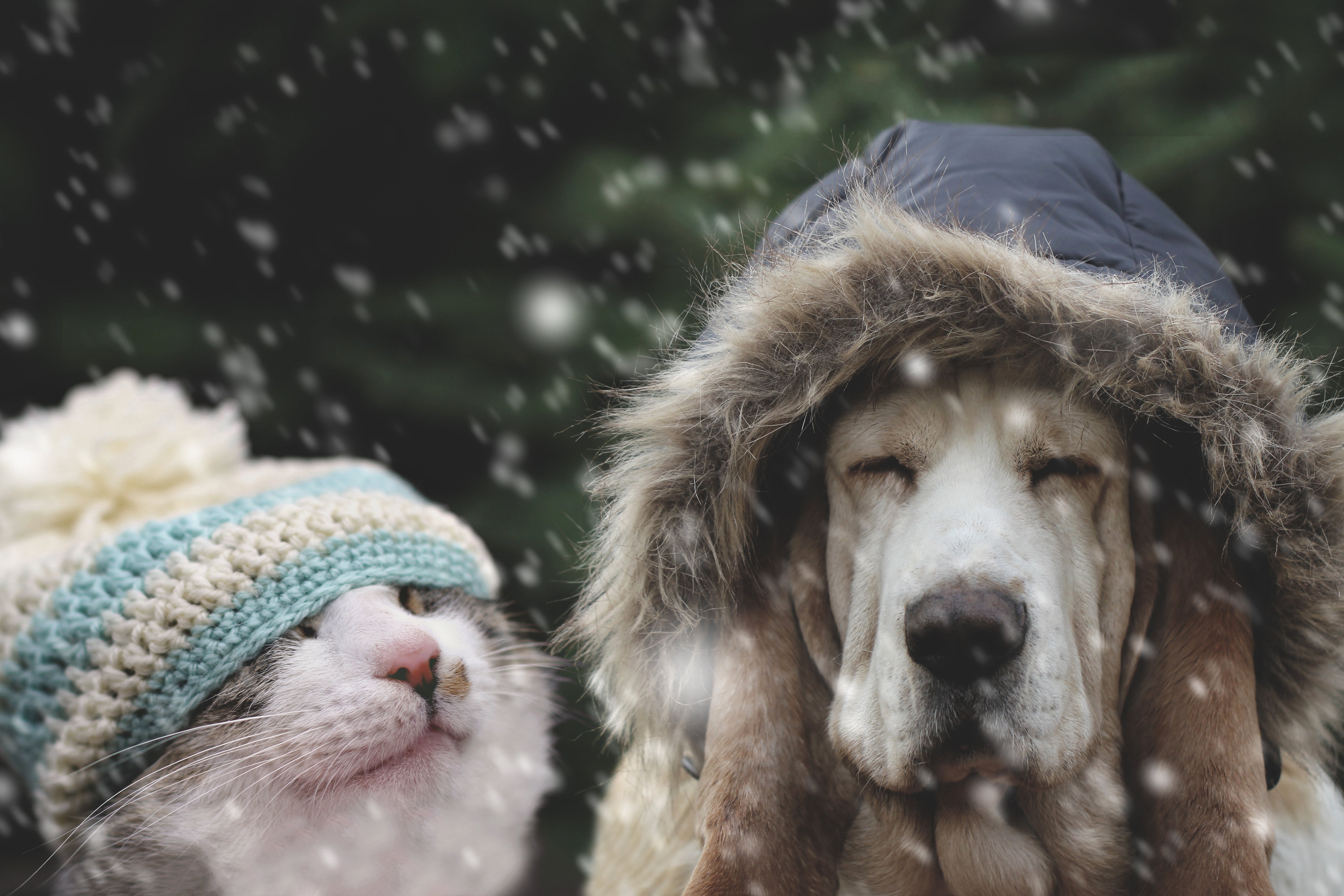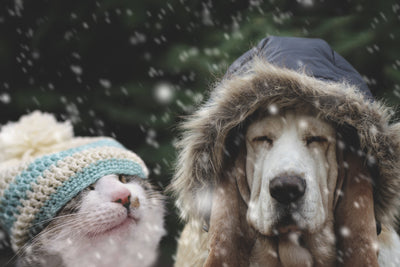How to Keep Your Pet's Skin Healthy as the Cold Weather Hits
Just like us humans, our pets can be prone to dry, flaky skin during the colder months, which can lead to irritation and discomfort. Add in potential environmental factors like snow, ice, and the salt and chemicals used on sidewalks and roads, and sensitive paw pads can get sore, cracked and injured. Fortunately, there are simple steps you can take to help keep your kitty-cats and doggos’ skin healthy, protected and moisturized as temperatures drop.
Why Does Cold Weather Affect Pet Skin?
During winter, the air loses moisture and becomes dry, which can strip the skin of its natural oils. Those natural oils play an important part in skin health by forming a protective barrier, keeping moisture locked into the skin. So when these oils are depleted, your pet's skin can become dry and flaky. Additionally, heating systems used indoors can further reduce humidity levels, exacerbating the problem. Pets who spend time outdoors in cold temperatures are also more likely to suffer from cracked paw pads, dry noses, and overall skin discomfort.
Recognizing Skin Issues in Your Pet
It's important to be vigilant for signs that your dog or cat may be suffering from winter skin problems. Common symptoms include:
- Dry, flaky skin: Visible dandruff or dry patches are signs that your pet’s skin is losing moisture.
- Itchiness: If your pet is constantly scratching, licking or biting at their skin more in wintertime, it may indicate dryness.
- Redness or inflammation: Irritated skin can become red and inflamed, leading to further discomfort.
- Cracked paw pads or nose: Cold surfaces, salt and low humidity can cause painful cracks on paws and noses.

Preventing and Treating Winter Skin Issues
Here are some steps to prevent and treat dry skin during winter:
1. Keep your home humidified: A humidifier can help maintain moisture levels in the air, benefiting both pets and people. Aim for between 30-40% indoor humidity in the winter. You will all feel better!
2. Limit outdoor exposure: When possible, limit your pet’s time outdoors during extreme cold and avoid heavily salted areas when possible. For dogs, consider protective booties to keep salt out and prevent cracked paws. Always clean off paws after a winter outing to help remove ice, debris or salt.
3. Test road surfaces: To test if a road surface is too cold for your pet, place the back of your hand on the pavement for a few seconds; if it feels too cold to comfortably hold you hand there, it’s likely too cold (and potentially damaging) for your pet’s paws. Keep an eye on your pet while walking – if they lift their paws, limp, or seem reluctant to walk, head back indoors and try again when it is warmer.
4. Pet breed: Pets with short coats may be more susceptible to the cold and have less fur protecting their skin’s surface. Keep in mind windchill is a factor as well. Consider a winter coat for them to help keep them warm and block that cold air; with an added bonus that they will look super cute! 5. Bathe sparingly: Frequent baths can strip natural oils from the skin. Use gentle, moisturizing shampoos when bathing your pet during the winter months.
6. Moisturize regularly: There are pet-safe moisturizers that can be applied to dry areas of your pet’s skin. Paw balms can also be used to treat cracked paw pads.
Silver Honey Solutions for Winter Skin Care
For pets suffering from winter-related skin issues, products from Silver Honey offer soothing, natural solutions. Silver Honey's line of products harnesses the power of Manuka Honey and MicroSilver BG® to promote rapid healing, soothe inflammation, and protect the skin. Our wound and skin care lines can be especially effective for pets dealing with cracked paw pads, dry noses, and minor wounds caused by wintery conditions. Using Silver Honey Hot Spot & Wound Care Ointment with moisturizing Shea Butter is perfect for tough, scabbed-over or extra-dry rashes and wounds. Silver Honey Rapid Skin Relief Shampoo is a soothing medicated shampoo free of irritating sulfates, parabens, dyes and scents. Both can help restore your pet’s skin barrier, reduce discomfort, and keep their skin healthy throughout the season.
By being proactive and taking a few easy steps for safety and using soothing, healing products, you can ensure your dog or cat remains comfortable and healthy, and you can all enjoy a fun winter.
Reference: Veterinary Dermatology. (2020). Seasonal Skin Changes in Pets: What to Watch For and How to Help.





